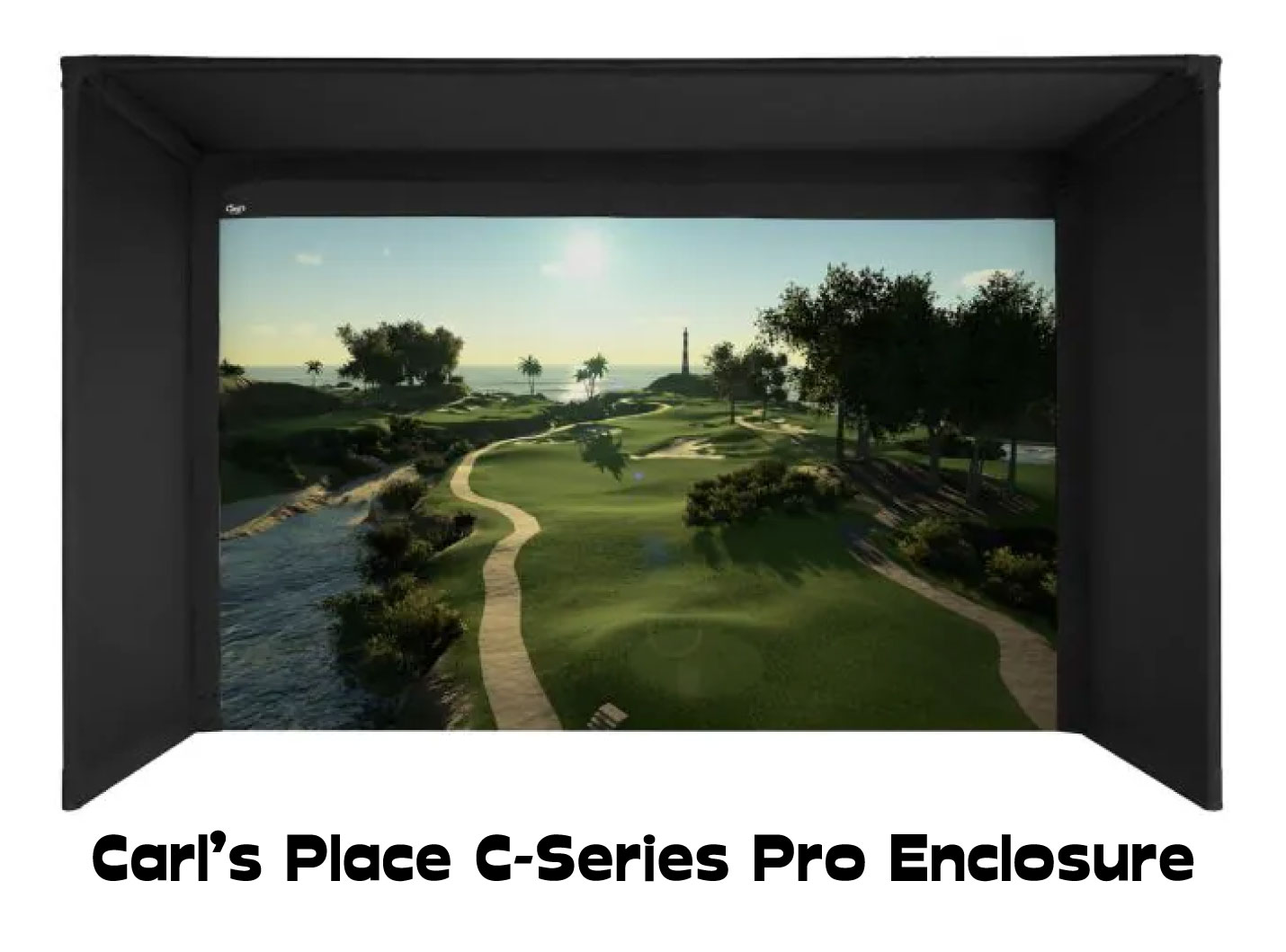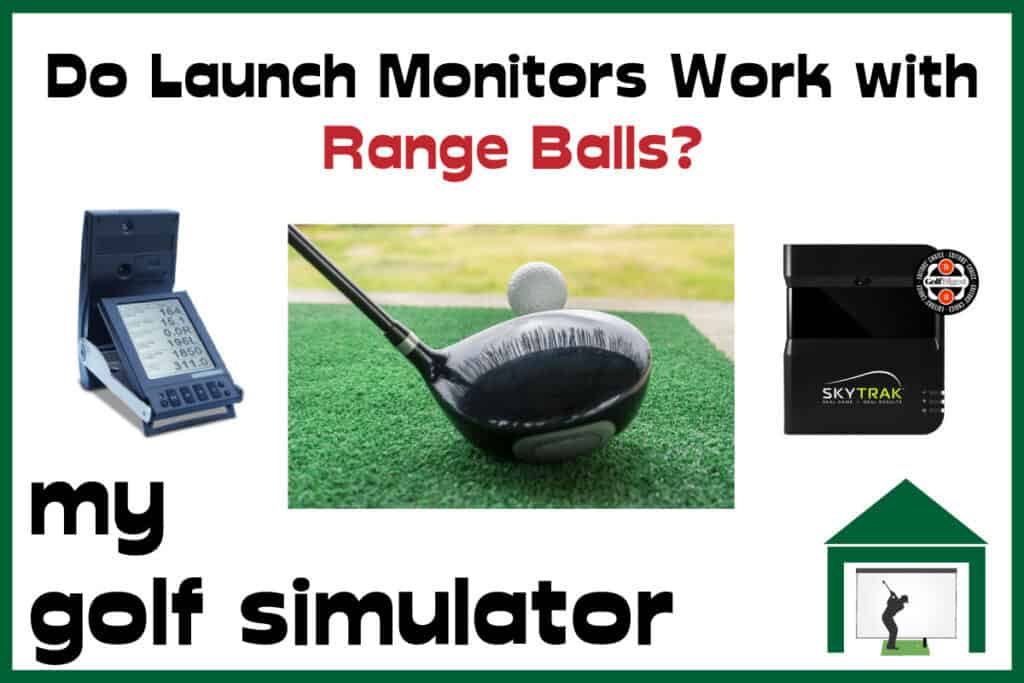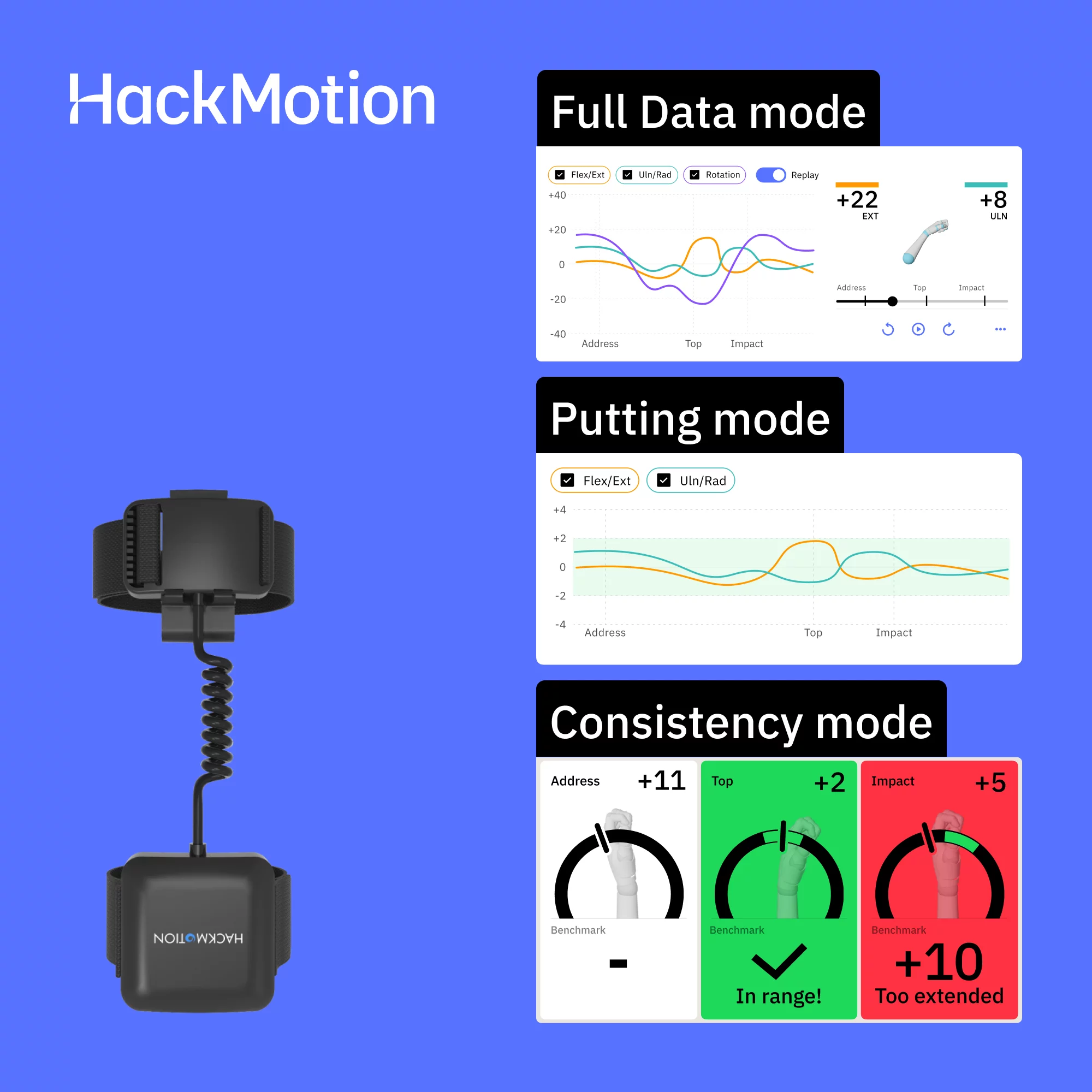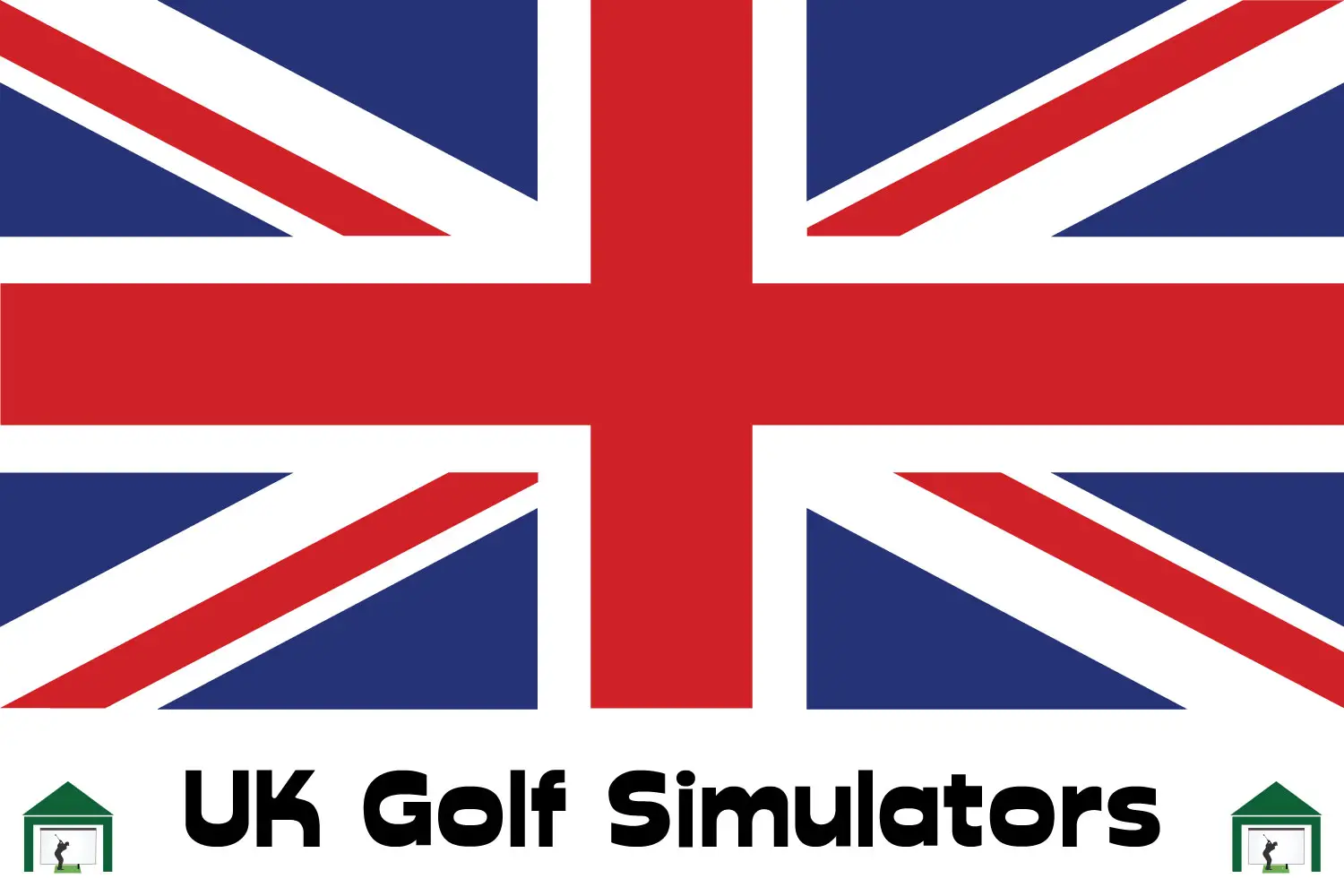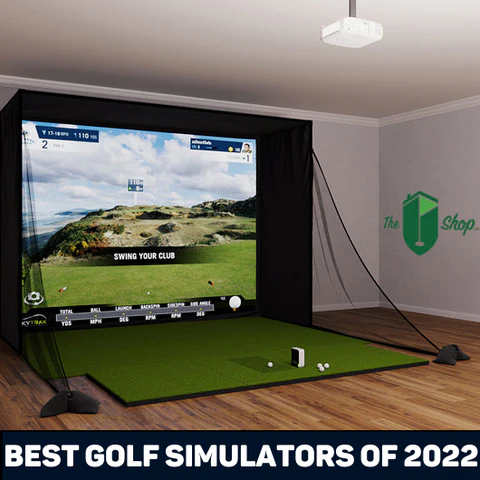What is Smash Factor? – Launch Monitor Data 101
Posted in Launch Monitor Data
Smash factor is one of the data parameters given by a launch monitor. It is calculated from ball speed and clubhead speed and is available on a wide range of launch monitors. Smash factor is also known as Power Transfer Index.
Smash factor is the ratio of ball speed to clubhead speed in golf. The higher the smash factor, the better transfer of energy from club to ball. Smash factor is calculated by dividing ball speed by clubhead speed. It is determined by the clubface, your swing, and the golf ball.
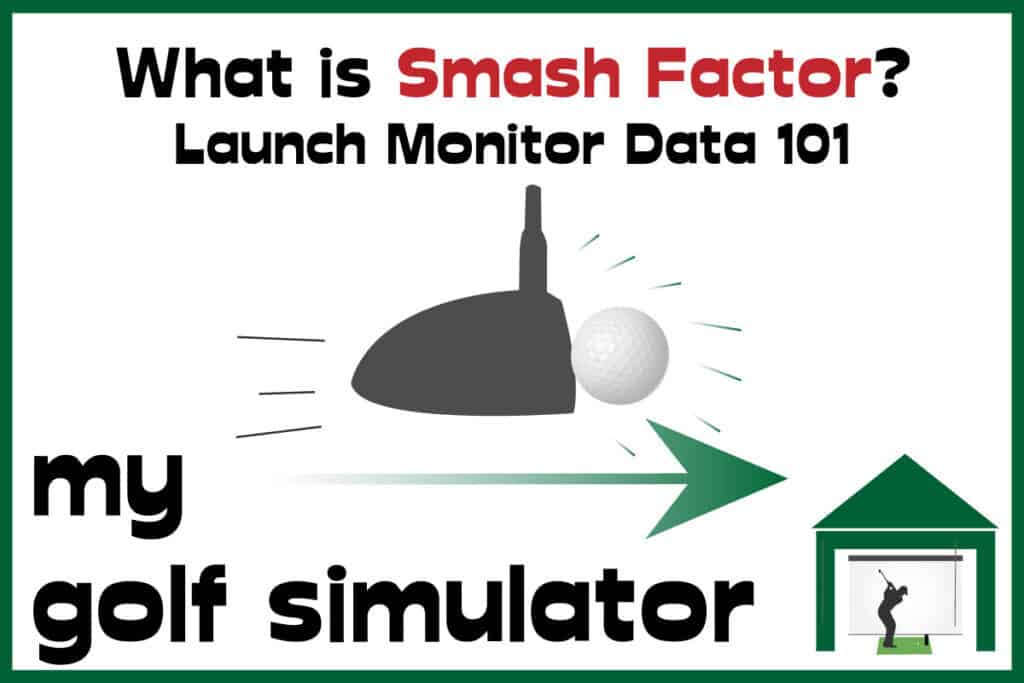
What does Smash Factor tell you?
Smash factor tells you how efficient your ball striking is. You get a measure of how efficiently you are imparting energy to the ball. Are you wasting any energy or are you maximizing your clubhead speed?
An example of Smash Factor
Say a golfer hits a driver and has a club head speed of 100mph and a ball speed of 140mph.
You can calculate smash factor like this:
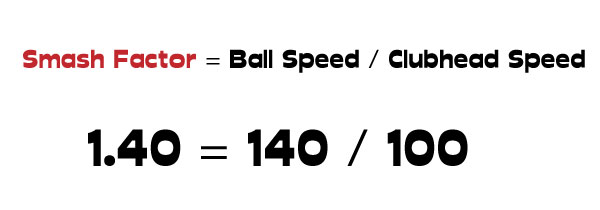
Does Higher Smash Factor Always Equal More Distance?
A higher smash factor for a given clubhead speed will equal more distance, providing all other variables are the same.
Say you absolutely nail the centre of the clubface but your swing path is a little off. Your smash factor could be higher but you have a suboptimal launch angle, or spin rate, causing a good initial ball speed but a quick drop off as the ball loses energy from moving sideways or upwards instead of forwards.
Smash factor can be a telling sign that you’re swinging too fast or at least not swinging very well. If you’re in the pursuit of extra distance then you can look at smash factor as a sign that you’re controlling your clubhead in such a way that you’re efficiently using the extra speed. If your smash factor numbers start to decrease then you need to work on your swing plane and balance more before increasing speed.
What is a Good Smash Factor for a Driver?
1.50 is often talked about at the number to aim for with smash factor. This is towards the maximum number achievable with a driver. There have been higher smash factor numbers recorded in the past but at 1.50 you’re transferring as much energy to the ball as the equipment will allow.
If there were no limits in equipment (for example ‘COR’ of a driver clubface) then theoretically higher smash factor scores would be possible. See below for more on this point.
What is a Good Smash Factor for a 6 Iron?
With a 6 iron, a smash factor of more than 1.30 would be a good result. According to the Trackman blog, the PGA Tour average for smash factor with mid irons like 6 iron is 1.38.
The trajectory of the flight of the ball matters a lot. The higher loft you put on the ball, the less efficient (in terms of speed and distance) the transfer of energy will be. However the optimum energy transfer and hence smash factor is achieved in a sweet spot of launch angles. Too low a launch and you’re sacrificing efficiency too.
How do you Increase your Smash Factor in Golf?
To increase your smash factor you need to hit the golf ball in the centre of the club face. To maximise the smash factor and hence energy transfer to the ball you also need to hit the ball without a glancing blow. You need a club path which is nice and neutral, both horizontally and vertically, not hitting down or up on the ball too much.
The main thing is a centred strike on the club face, as this video from the Trackman Youtube Channel explains. Using foot spray on the golf club can help you understand whee you hit the ball on the face. Premium launch monitors can help you learn about this visually too.
PGA Tour Smash Factor Examples
Take a look at the PGATOUR stats website. They list the Smash factor numbers for all the players in each and every tournament. All the smash factor numbers are great, I guess they all strike the ball beautifully!
Is there a Max Smash Factor?
Can Smash Factor be Too High
Smash factor can’t be ‘too high’ unless you’re getting inaccurate results from your equipment. You want as efficient a transfer of energy to the club as you can get. However golf is a game of consistency and as you improve you need to know exactly how far you hit the ball. Many golfers would sacrifice distance with their irons to ensure they always hit each iron a predictable distance.
What is the maximum allowed smash factor?
There is no official maximum smash factor in golf. However, indirectly, maximum smash factor numbers are determined by some of the limits imposed by golf’s governing bodies onto the equipment we use.
As we said at the beginning of this article, smash factor is determined by the clubface, your swing and the ball.
Smash Factor vs Coefficient of Restitution
The golf club face is limited by the rules of the game. There is a maximum level set at which the golf club can transfer energy to the ball. This sound a lot like a maximum smash factor number, however it is actually a maximum limit of a property called the Co-efficient of Restitution.
Co-efficient of Restitution is the ratio of the final velocity and the initial velocity of two objects after a collision. It is a measure of how much energy is lost during a collision of two independent objects, in this case the clubhead and the golf ball. The Co-efficient of Restitution is measured between 0.0 and 1.0 with a ratio of 1.0 being impossible as no collision will be so perfect that no energy is lost.
The difference between smash factor and Co-efficient of Restitution is that smash factor is strictly a ratio of post-impact ball speed and pre-impact club speed. Co-efficient of Restitution is a measurement of the change in velocities of the two objects.
They’re very similar, but Co-efficient of Restitution is a bit more scientific!
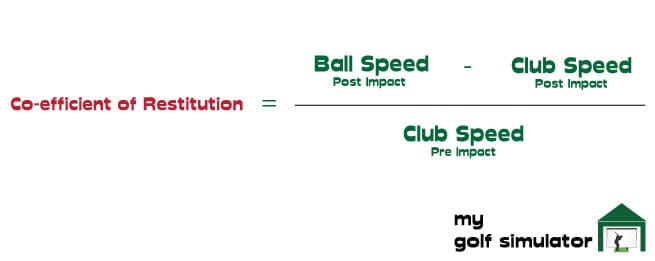
Co-efficient of Restitution is very hard to measure in practice though, so golf’s governing bodies introduced a property called Characteristic Time. Yet another measurement to get your head around. Characteristic time is a measurement of how long the ball is in contact with the clubface. The current limit is 239 microseconds (actually upto 257 microseconds with the error margin added).
Smash Factor and Spin Loft
Spin loft is another launch monitor parameter you’ll want to optimise, in order to maximise distance with driver or consistency with lofted clubs.
Spin loft is the approximate difference between the angle of attack of the club and the dynamic loft of the club face. The spin loft directly affects how much spin is imparted and how quickly the ball comes off the club. This means it has a clear effect on smash factor.
Spin loft is technically a 3D measurement as it is affected by the direction the loft is pointing in too.
Check our this excellent video from the GolfTec Youtube Channel.
Effects of Higher Spin Lofts
Increasing your spin loft will mean:
- The ball will leave the clubface with less speed, reducing smash factor (the efficiency of transfer of energy from club to ball) and the distance travelled
- Increased ball spin
Effects of Lower Spin lofts
Decreasing your spin loft will mean:
- The ball wil leave the clubface with more speed, increasing smash factor (the efficiency of transfer of energy from club to ball) and the distance travelled.
- Decreased ball spin
Using Spin Loft to your Advantage
You can generate maximum ball spin with a faster swing speed and a high spin loft. More of your effort will be transferred to spinning the ball rather than raw distance.
You can maximise distance by having a faster swing speed and a lower spin loft. More the energy you impart to the ball will be transferred to moving the ball forwards, rather than spinning it.
This is why you don’t achieve the same smash factor numbers with lofted clubs compared with your driver.
Does the golf shaft affect the Smash Factor
Smash factor can be used as a custom fitting tool to show that a certain shaft and clubhead combination works well for a golfer. If that golfer is achieving excellent smash factor numbers, along with optimum other numbers like distance, spin rates (and spin loft) and dispersion, then this is a good sign for that club.
He or she will then be getting the maximum distance possible out of that club for a given swing speed.
Pretty much every golfer wll be able to find the sweet spot more often with a shorter driver however. Whilst techinically a longer driver will be able to achieve a higher clubhead speed, the golfer will find it more difficult to hit the centre of the clubface with a longer shaft.
This means your club speed will be higher but your your strike likely off centre and your smash factor lower. Hence it’s difficult to achieve a higher ball speed consistently with a longer shaft. Shorter shafts sometimes equal more distance for this reason.
Getting fitted for the correct shaft is important too. Optimising the stiffness and kick point of the shaft will allow you to get the angle of attack, dynamic loft and club path just right. If you can maximise your smash factor and optimise your spin loft, face angle and club path, you’re winning!
Does Smash Factor matter for all clubs?
You won’t achieve the same smash factor with a wedge or 9 iron as you do with your driver. Higher lofted clubs impart much more spin onto the ball than a long club does. The impact with the club is not therefore optimised solely for distance.
Therefore, I don’t believe it’s wise to place too much stock in smash factor on your wedges and lofted irons. You can get a gauge on the efficiency of your strike on mid irons and above using smash factor, but I’d worry far more about your strike and achieving a consistent distance with your wedges.
If you really want to get into it, there’s been some work done that shows that achieving a smash factor of 1.0 can maximise the spin achieved in wedge shots. You can learn more about this here.
Optimising smash factor and the spin loft of the wedge shot can ensure consistent strikes and distance for advanced players.
Which Launch Monitors feature Smash Factor?
Most Premium launch monitors read out Smash Factor
Any premium launch monitor that measures clubhead speed and ball speed will then read out the ratio of these numbers as smash factor. It’s one of the measurements you should expect from your equipment. Some launch monitors will show it front and centre on the display, and some might feature it less prominently in their data tables for each shot.

I will shortly be publishing a resource which will let you quickly check all launch monitors available on the market to see which data parameters are available.
Smash Factor and Portable launch monitors for the driving range
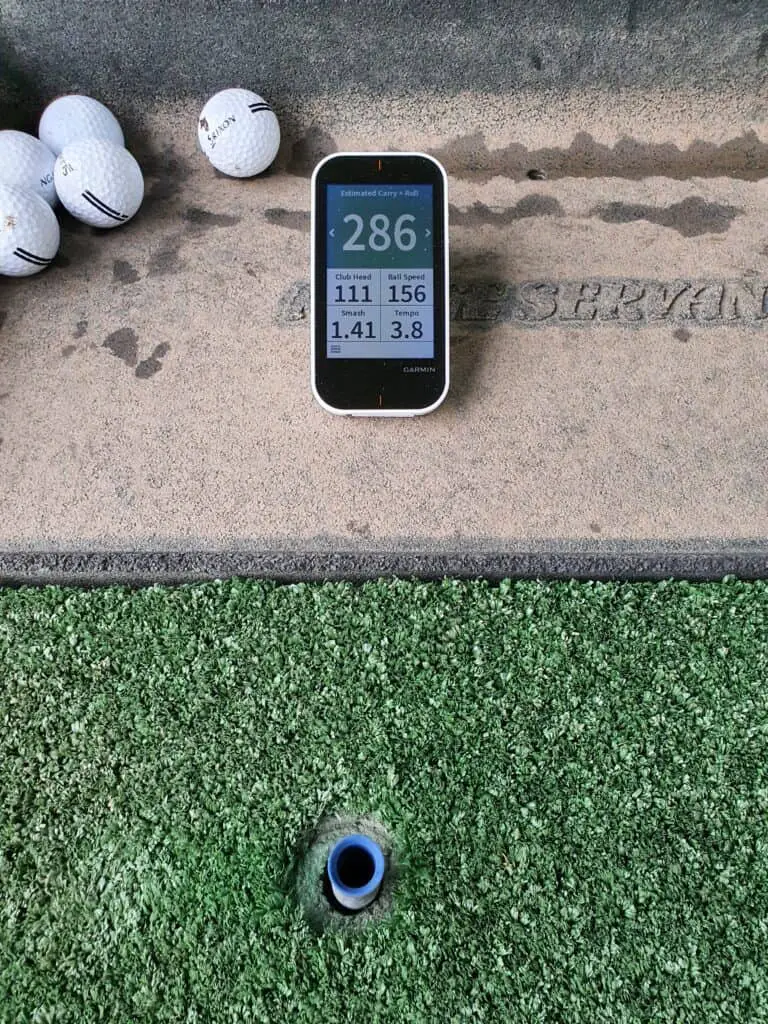
The above picture is my Garmin G80 at the driving range – I have room to improve my smash factor!
Smash factor is included on many cheaper portable launch monitors that are fantastic tools at the driving range. I’m seeing more and more golfers taking tools like this, as well as swing cameras to the range. They can really enhance your practice session, allowing you to work on specific achievable goals and drills.
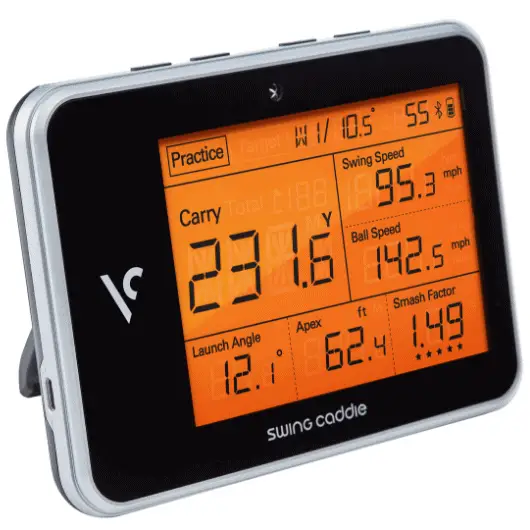
Conclusion – Why should you care about Smash Factor?
Smash factor is an easily measured and relatively easy to understand parameter given by the majority of launch monitors. It can tell you whether you’re getting the most out of your swing speed or wasting distance with poor ball strikes.
Smash factor can be the key to finding lots of extra yards of distance, without doing a Bryson Deschambeau and putting on 40lbs of muscle! If you’re an elite player it’s another method of honing your wedge game too.
Check out our similar articles
Mevo Gen 2 Space Requirements
Gray Impact Screens – Pros and Cons
ABOUT THE AUTHOR
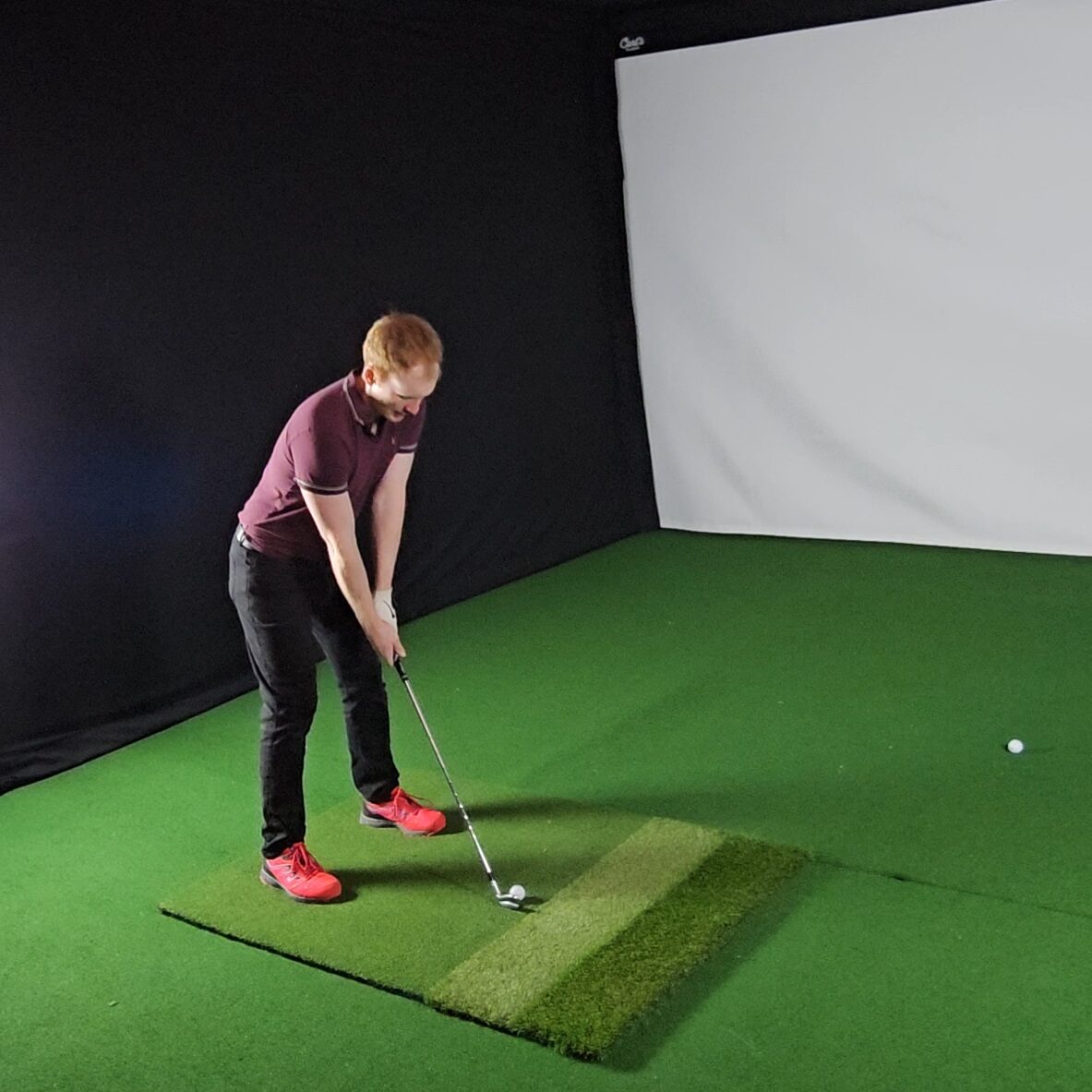
Hello! My name is Alex and it is my mission to bring you all the information you need to build your own home golf simulator! I hope mygolfsimulator.com helps you on your journey to better golf at home!
LEGAL INFORMATION
On this site, you'll find articles on all aspects of building a golf simulator. I will also link to other sites where you can buy some of the simulator components. Some of these links may be affiliate links, which means if you click them I gain a small commission at no extra cost to you. This really helps out me and my site so thank you in advance! mygolfsimulator.com and all related social media accounts are property of Awonline LTD.
